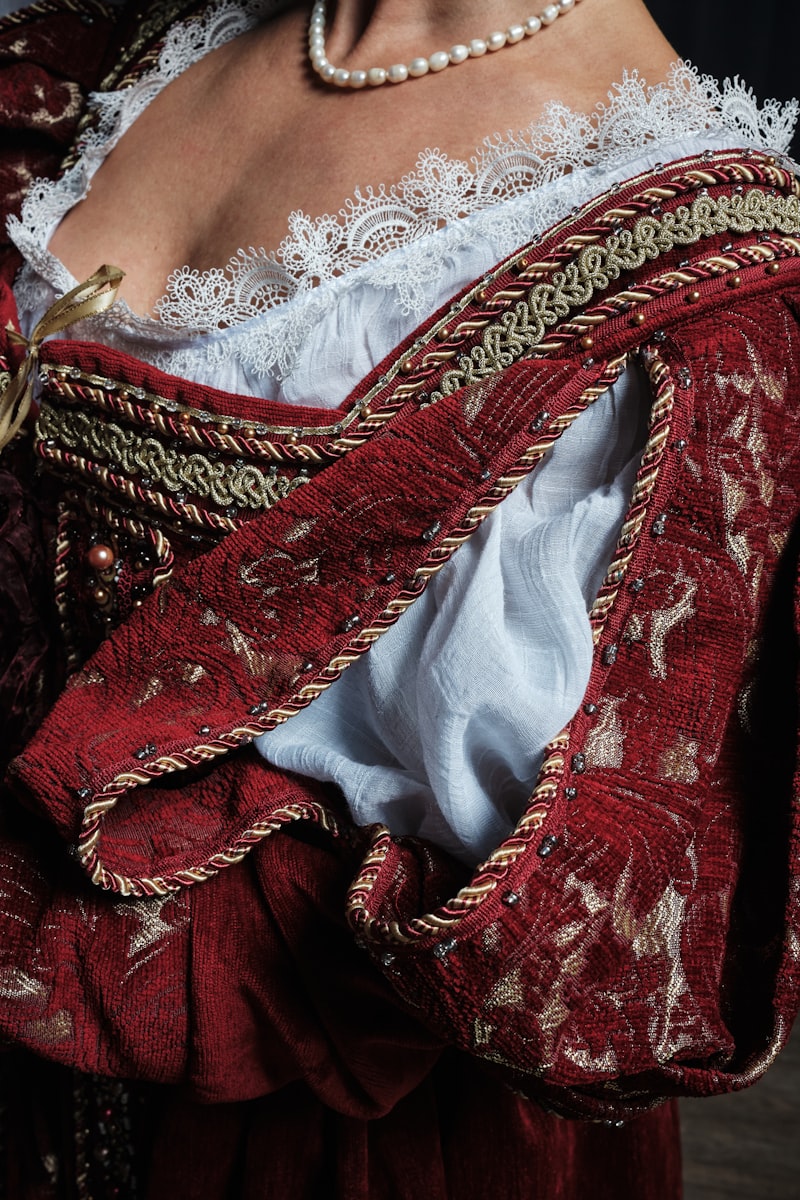Challenging Gender Norms in Bridal Fashion: A Revolutionary Shift
Challenging Gender Norms in Bridal Fashion: A Revolutionary Shift
Introduction to Bridal Fashion and Gender Norms
Bridal fashion has long been associated with specific gender norms and expectations. Traditionally, weddings have been characterized by clear demarcations: brides in white gowns, grooms in formal suits, and a well-defined gender binary that often limits expression. However, as society evolves, so too does the understanding of gender and identity. This article explores how bridal fashion is challenging these long-held norms, embracing diversity, and allowing couples to express themselves authentically.
The Historical Context of Bridal Fashion
To understand the current shifts in bridal fashion, it's essential to look back at its historical context. Bridal gowns have traditionally been white, symbolizing purity and virginity, a concept deeply embedded in society's patriarchal structure. Grooms, on the other hand, were often relegated to traditional tuxedos, emphasizing a classic masculine aesthetic. 
| Year | Bridal Attire Trends | Groom Attire Trends |
| 19th Century | White gowns symbolizing purity | Top hats and tailcoats |
| 20th Century | Emphasis on lace and elegance | Formal suits and bow ties |
| Modern Day | Diverse colors, styles, and materials | Casual and themed outfits |
Current Trends Challenging Gender Norms
In recent years, the wedding industry has seen a remarkable transformation. Couples are increasingly choosing outfits that reflect their personalities rather than conforming to established norms. Here are some of the trends that are redefining bridal fashion:
1. Color Beyond the Traditional White
Many brides are opting for colored gowns that reflect their unique styles—think deep reds, soft pinks, vibrant blues, or even black. This shift not only challenges the notion that brides must wear white but also offers a broader palette for self-expression.
2. Gender-Neutral and Non-Binary Options
Bridal fashion has expanded to include gender-neutral options, providing attire that doesn't strictly adhere to binary gender definitions. These outfits often feature tailored suits, stylish jumpsuits, and elegant trousers that allow individuals to showcase their identities authentically.
3. Embracing Cultural Diversity
As weddings become more global, designers increasingly incorporate cultural elements into their collections. This trend celebrates diversity and encourages couples to blend their cultural backgrounds, opening up endless possibilities for bridal looks.
The Role of Designers in Shaping Trends
Innovative designers are at the forefront of this revolution. Names such as Vera Wang, Christian Siriano, and Roksanda Ilincic have begun to create collections that challenge traditional norms and reflect a more inclusive understanding of bridal fashion. Their designs often feature unique materials, unexpected cuts, and a broad array of colors and styles.
Spotlight on Designers
These trailblazing designers are sending a clear message: bridal fashion can—and should—be inclusive. Here’s how they contribute:
| Designer | Contributions |
| Vera Wang | Modern silhouettes and dramatic designs |
| Christian Siriano | Gender-inclusive designs and body positivity |
| Roksanda Ilincic | Bright colors and innovative shapes |
Real Couples Making a Statement
It's not just designers pushing boundaries; real couples are also reshaping the bridal narrative. Many couples are opting for styles that reflect their unique love stories. For instance:
Couple A: Breaking the Mold
Couple A, who hail from California, decided on a navy blue tuxedo for the groom paired with a floral-patterned gown for the bride. This decision not only turned heads but also inspired guests to rethink their own wedding attire norms.
Couple B: Celebrating Diversity
Another couple from New York combined their cultural heritages by infusing traditional attire from both backgrounds into their wedding outfits. This beautiful fusion represented both their identities, creating a vibrant and memorable celebration.
Challenges in the Shift Toward Inclusivity
Despite the positive trends, the journey toward inclusive bridal fashion is not without challenges. Some venues still impose strict dress codes, and many traditional retailers are slow to adjust their offerings. Additionally, cost can be a significant factor, with unique, custom outfits often requiring a higher investment. Perceptions of gender in society also play a role, as some individuals feel pressure to conform to conventional styles for fear of judgment.
Future of Bridal Fashion: Embracing Individuality
The future looks bright for bridal fashion as the conversation about gender norms continues to evolve. Couples are becoming more empowered to express their identities, and the industry is adapting to reflect this shift. We can expect to see:
- Continued growth of gender-neutral collections
- More inclusive sizing options for all body types
- Increased visibility of diverse representations in wedding media
Conclusion: Embracing Change in Bridal Fashion
In conclusion, challenging gender norms in bridal fashion is not just a trend—it's a movement towards inclusion and authenticity. Couples today are empowered to express themselves in ways that resonate with their identities, and the wedding industry is gradually reflecting that change. As more designers, couples, and industries embrace this evolution, the landscape of bridal fashion will continue to shift.
As you plan your special day, consider what unique elements reflect your personality. Whether it’s through color, style, or the fusion of cultural backgrounds, the most important aspect of bridal fashion is that it aligns with who you are. Remember, it’s your day—make it yours!
For anyone considering a wedding of their own, the key takeaway is to prioritize authenticity. Don't be afraid to challenge traditional norms and pave your own path. Embrace the elements that speak to you, and you'll create a ceremony that is not only memorable but truly reflective of your love story.
